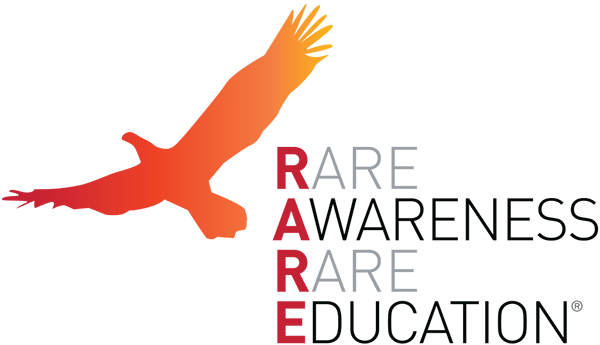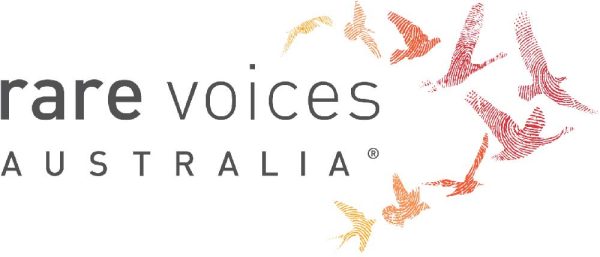Corpus callosum disorders (CCD) (Group of conditions)
Quick Search
- Summary
- Synonyms and Classifications
- Symptoms
- Disability Impacts
- Cause and Inheritance
- Diagnosis
- Treatment
- Clinical Care Team
- Clinical Care Guidelines
- Emergency Management
- Research
- Rare Disease Organisation(s)
- Lived Experience
- Support Services and Resources
- Mental Health
- Other Information
- Useful Links for Healthcare Professionals
Summary
Corpus callosum disorders (CCD) is a group of congenital conditions in which there is abnormal development of the corpus callosum.1 The corpus callosum is a thick bundle of more than 200 million nerve fibres connecting the right and left hemispheres of the brain. It enables communication and the transfer of cognitive and sensory information between the two hemispheres.1-2 The corpus callosum forms during early development of the foetus. In cases where the corpus callosum fails to develop properly, this may result in the corpus callosum being completely absent (agenesis), partially absent (partial agenesis), is present but is thinner (hypoplasia) or thicker (hyperplasia) than usual.1, 3-5
CCD varies widely (heterogeneous) in cause and presentation,3 with impacts ranging from a mild effect to severe disability. The exact cause of many corpus callosum disorders (CCD) is still unknown and accurate prognosis is difficult. In some cases, CCDs may be part of a syndrome.1,3
Synonyms and Classifications
Synonyms: Corpus callosum dysgenesis (CCD); disorders of the corpus callosum (DCC); complete agenesis of the corpus callosum (ACC); partial agenesis of the corpus callosum (pACC); Hypoplasia of the corpus callosum (thinner); Hyperplasia of the corpus callosum (thicker).
Universal rare disease classifications provide a common language for recording, reporting and monitoring diseases. Please visit the Rare Disease Classifications page for more information about these internationally recognised classifications.
Please refer to the individual CCD for their specific classifications.
Symptoms
A CCD is present from birth and is lifelong. Impacts can vary widely depending on the type of CCD, and range from few or almost no impacts to complex.
Individuals with CCD may experience cognitive, physical, and psychological impacts including developmental delay, anxiety, communication problems, hypotonia, visual/hearing deficits, seizures, difficulties with regulating emotions and behaviours, and issues with social interactions, including increased persuadability and credulity.6-11
Please speak to your medical team to learn more about the symptoms and complications of a CCD.
Disability Impacts
Rare diseases are often serious and progressive, exhibiting a high degree of symptom complexity, leading to significant disability. Majority of the estimated two million Australians living with a rare disease meet the Australian Government’s definition for disability (in accordance to the Australian Public Service Commission and Australian Bureau of Statistics), and many experience severe and permanent disability impacts. If you or someone you care for is experiencing disability-related impacts from a rare condition, please speak with a health or disability professional for advice. Information about relevant disability support can be found at the RARE Portal’s Disability Support Information page.
Cause and Inheritance
It is not always easy to determine the cause of a corpus callosum disorder. The exact cause of many corpus callosum disorders (CCD) is still unknown but it is thought that most CCDs have a genetic cause, with genetic changes in a large number of genes being associated with CCDs.4 These genetic changes may be inherited or may be due to a random genetic change (de novo mutation) occurring before birth. For some individuals, their CCD may be part of a syndrome.4
There may be other external factors that can cause corpus callosum malformation, such as fetal exposure to alcohol, drugs or infection, and physical brain injury.12
If you would like to learn more about the inheritance and impact of this condition, please ask your doctor for a referral to a genetic counsellor. Genetic counsellors are qualified allied health professionals who can provide information and support regarding genetic conditions and testing. More information about genetic counselling can be found at:
- Information on Genetic Services
- The National and State Services pages underneath the ‘Genetic Counselling’ sections listed
Diagnosis
A CCD may be diagnosed by neuroimaging, such as magnetic resonance imaging (MRI) or ultrasound of the brain.4,5 A prenatal ultrasound may also detect a CCD;1 however, some individuals are not diagnosed until later in childhood or as adults.
Please speak to your medical team to learn more about the available diagnostic pathways for CCDs.
Treatment
There is no curative treatment for CCDs. Treatment involves a multidisciplinary care team and is targeted at managing symptoms (symptomatic management) and assisting with developmental milestones. This may include physiotherapy, occupational therapy, psychology, speech therapy and seizures management.
Please speak to your medical team to learn more about the possible treatment or management options for your condition. Treatment will depend on an individual’s specific condition and symptoms. It is also important to stay connected to your medical team so that you can be made aware of any upcoming clinical trial opportunities.
Clinical Care Team
Clinical care for rare diseases often involves a multidisciplinary team of medical, care and support professionals. Please note that the information provided here is as a guide and that RVA does not necessarily monitor or endorse specific clinics or health experts.
Healthcare professionals involved in the treatment of corpus callosum disorders may include general practitioners (GP), perinatologists, paediatricians, geneticists, radiologists, neurologists, endocrinologists, cardiologists, gastroenterologists, otorhinolaryngologists (ENT or Ears, Nose and Throat specialists), ophthalmologists, optometrists, audiologists, anaesthesiologists and psychologists. The need for different healthcare professionals may change over a person’s lifetime and extend beyond those listed here.
Clinical Care Guidelines
We are not aware of any official clinical care guidelines for corpus callosum disorders (CCD) in Australia. If you know of any relevant care guidelines, please let us know via the Contribute page.
AusDoCC has created management guidelines for professionals for all life stages of CCD, with input from health professionals in Australia in 2018.
Emergency Management
Individuals living with rare diseases may have complex medical issues and disabilities, which are not always visible. It is often useful to refer to their medical history as well as personal information such as a medical card, doctor’s letter, or if available, a rare disease passport, for relevant information.
It may be important to consider the following when managing individuals living with CCDs at emergency departments/services:
- CCDs are extremely heterogeneous in cause and presentation. CCD impacts may be mistaken for, or overshadowed by, other conditions that are more commonly recognised, such as autism, epilepsy and obsessive-compulsive disorder (OCD), causing the full range of an individual’s CCD impacts to be overlooked
- It is important for medical staff to identify and take in account the medical history and personal profile of an individual with CCD, which can provide relevant information about the appropriate intervention and support.
- Individuals with CCD typically experience anxiety, which can cause them to be overwhelmed, creating difficulties with communication in unfamiliar and stressful environments and affect their ability to self-advocate.
- Children and teens will need a familiar adult present to advocate for them.
Research
The International Research Consortium for the Corpus Callosum and Cerebral Connectivity is composed of scientists and clinicians from around the world working in collaboration to accelerate research and promote data sharing.
Brain Development and Disorders Laboratory is a key global research centre lead by a key corpus callosum researcher, Professor Linda Richards AO and has a team which includes Australian scientists.
There are specific considerations around participating in rare disease research, including clinical trials. It is important to be mindful of issues such as data privacy, research ethics, consent and differences in research regulations between Australia and other countries.
If you are interested in finding clinical trials for your condition, please visit the following websites; however, there may not be any clinical trials available:
It is best to discuss your interest in any clinical trials with your medical team to determine suitability and eligibility.
Please note that RVA does not necessarily monitor or endorse each group/organisation’s operational governance and activities.
Rare Disease Organisation(s)
Australian Organisation:
Australian Disorders of the Corpus Callosum (AusDoCC)
Website: https://www.ausdocc.org.au/
AusDoCC is the peak group supporting people with corpus callosum disorders (CCD) and their families and professionals, in Australia and New Zealand.
Please note that RVA does not monitor or endorse each group/organisation’s operational governance and activities. When engaging with a group, please consider the information on the RARE Portal’s Finding Helpful Peer and Community Supports page.
Lived Experience
CCDs vary between individuals, and each person’s experience is unique.
Personal stories can be found at AusDoCC: Our Stories.
If you would like to share your personal story with RVA, please visit the Rare Voices Australia: Share Your Story page. RVA will consider your story for publishing on our website and inclusion on the RARE Portal.
Support Services and Resources
AusDoCC: Information for Teachers has resources to assist teachers who have a child with a corpus callosum disorder in the classroom.
AusDoCC’s Youtube channel has videos with information on CCDs.
For information on available government and social services that provide support for individuals with a rare disease, please visit the National and State Services pages.
Mental Health
People living with a rare disease, including families and carers, often face unique challenges such as diagnostic delays, misdiagnoses, limited treatment options, and limited access to rare disease specialists and support. These challenges may impact people’s emotional wellbeing and quality of life. Many people find it helpful to seek mental health and wellbeing support to cope with ongoing stress and uncertainty. Connecting with people who have shared experiences through a support group may also be helpful. Information about relevant mental health and wellbeing support can be found at:
- Mental Health and Wellbeing Support for Australians Living with a Rare Disease
- The National and State Services pages underneath the ‘Mental Health’ sections listed
Other Information
Further information on the corpus callosum can be found at:
Useful Links for Healthcare Professionals
References
- International Research Consortium for the Corpus Callosum and Cerebral Connectivity. Why are we studying the corpus callosum? Accessed 20 November 2023. https://www.irc5.org/who_we_are/why-study-the-corpus-callosum/
- Queensland Brain Institute. Corpus callosum. Accessed 20 November 2023. https://qbi.uq.edu.au/brain/brain-anatomy/corpus-callosum
- Edwards TJ, Sherr EH, Barkovich AJ, Richards LJ. Clinical, genetic and imaging findings identify new causes for corpus callosum development syndromes. Brain. 2014; 137(Pt 6):1579-613. https://doi.org/10.1093/brain/awt358
- Lerman-Sagie T, Ben-Sira L, Achrion R. et al. Thick fetal corpus callosum: An ominous sign? Ultrasound Obstet. Gynecol. 2009; 24(1):55-61. https://doi.org/10.1002/uog.6356
- Rollins NK. Diffusion imaging of the congenitally thickened corpus callosum. AJNR Am J Neuroradiol. 2013; 34(4):660-665. https://doi.org/10.3174/ajnr.A3245
- Brown WS, Paul LK. The Neuropsychological Syndrome of Agenesis of the Corpus Callosum. Journal of the International Neuropsychological Society. 2019;25(3):324-330. https://doi.org/10.1017/S135561771800111X
- Siffredi, V., Anderson, V. A., McIlroy, A., Wood, A., Leventer, R. J., & Spencer-Smith, M. (2018). A Neuropsychological Profile for Agenesis of the Corpus Callosum?: Cognitive, Academic, Executive, Social, and Behavioral Functioning in School-Age Children. Journal of the International Neuropsychological Society, 24(5), 445-455. https://doi.org/10.1017/S1355617717001357
- Maxfield, M., McVilly, K., Devine, A. et al. Cognitive and Psychological Impacts of Congenital Corpus Callosum Disorders in Adults: A Scoping Review. Adv. Neurodev. Disord. 2023; 7 (165–188). https://doi.org/10.1007/s41252-023-00323-8
- Shakes P, Cashin A, Hurley J. Scoping Review of the Prenatal Diagnosis of Agenesis of the Corpus Callosum. J Obstet Gynecol Neonatal Nurs. 2020;9(5):423-436. https://doi.org/10.1016/j.jogn.2020.06.003
- Maxfield, M., Cooper, M.S., Kavanagh, A. et al. On the outside looking in: a phenomenological study of the lived experience of Australian adults with a disorder of the corpus callosum. Orphanet J Rare Dis. 2021; 16(512). https://doi.org/10.1186/s13023-021-02140-5
- Barnby JM, Dean RJ, Burgess H. et al. Increased persuadability and credulity in people with corpus callosum dysgenesis. Cortex. 2022; 155:251-263. https://doi.org/10.1016/j.cortex.2022.07.009
- Queensland Brain Institute. Childhood brain disorders. Accessed 4 June 2025. https://qbi.uq.edu.au/brain/brain-diseases/childhood-brain-disorders
Contributors
This page has been co-developed by Rare Voices Australia (RVA)’s RARE Portal team in consultation with Australian Disorders of the Corpus Callosum (AusDoCC).
If you are aware of any additional information that may benefit stakeholders with an interest in this page, or if you notice any broken links or inaccurate information, please let us know via the Contribute page.

